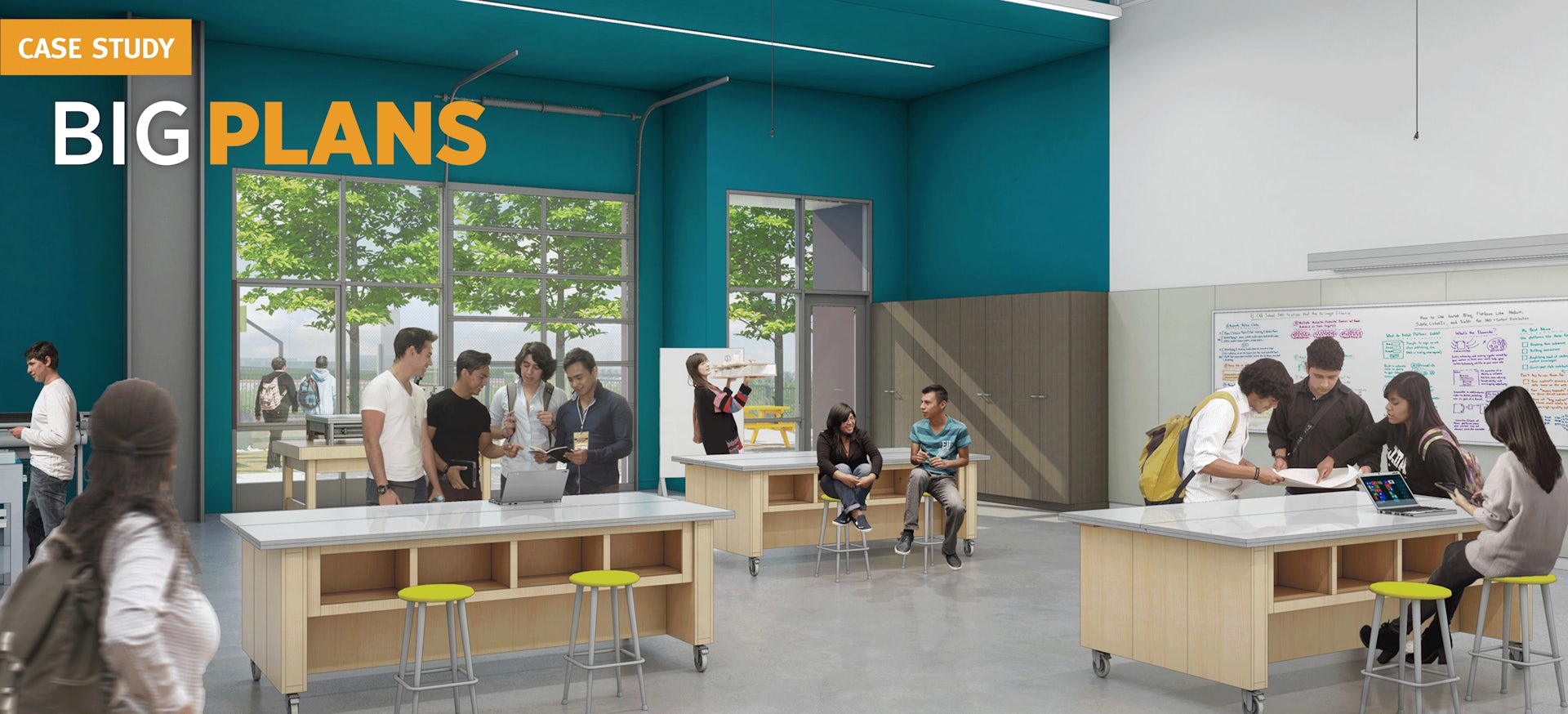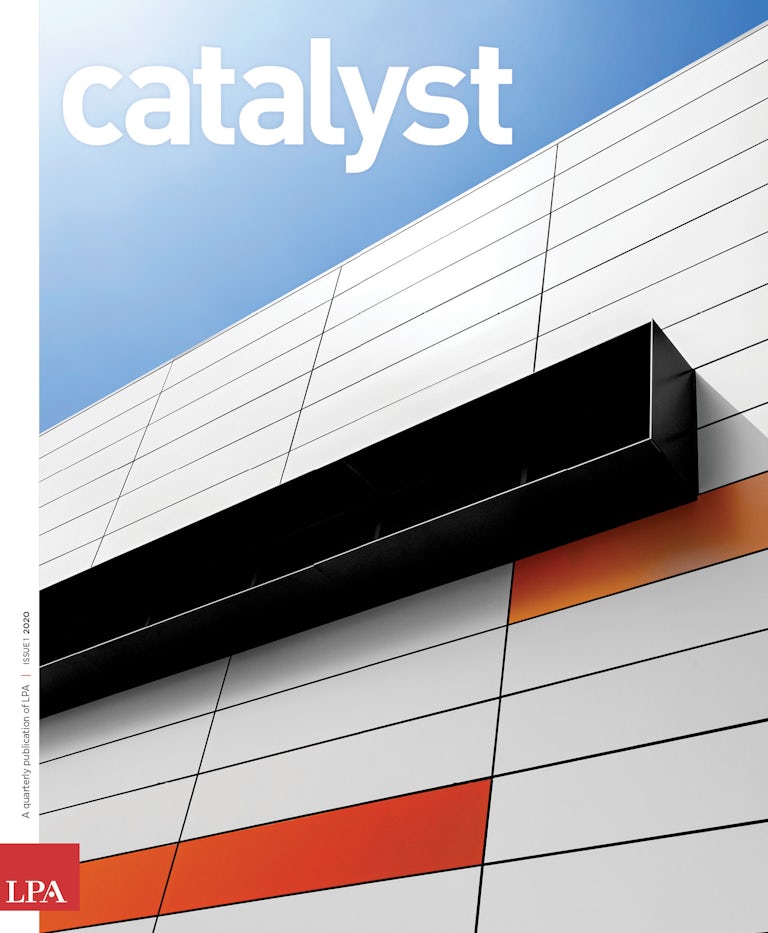As Deputy Director of Facilities, Planning and Development for the Los Angeles Unified School District, Alix Walsh O’Brien, AIA, oversees school construction work on more than 1,000 schools, serving 600,000 students. In recent years, she has worked on hundreds of rehabilitation, modernization and replacement projects, looking to address the evolving needs of students and communities, while maximizing the district’s bond funding.
LAUSD has more than 840 active projects valued at nearly $5.4 billion underway, covering a wide range of neighborhoods and facilities. More than 75 percent of the schools opened more than 50 years ago.
In an exchange with Catalyst, Walsh O’Brien discusses the challenges and goals of the district’s massive renovation programs.
Case Study: Big Plans
Los Angeles Unified School District’s Alix Walsh O’Brien is bringing aspirational design, memorable spaces and a focus on the community to the renovation of schools in the country’s second-largest district.
What is your design strategy as you try to upgrade facilities?
Since early last year we’ve been looking at the development of our planning ideals and objectives. As we’ve moved forward with this large program, there are a few big themes. We want high-quality planning, with consideration given to operations and supervision. This is very important as we work on operating school sites. We are also looking for quality design that will serve and support students for decades. And we’re paying close attention to the opportunities of outdoor spaces. We want good landscape design, outdoor classrooms and varied gathering spaces.
You often talk about aspirational design and memorable spaces.
Aspirational design is particularly important for middle and high schools. Typically, the aspirational building is attentive to a civic ideal. It has a presence. This can be achieved in the use of materials, the focus of the entry design or little details throughout the design. Sometimes it’s found in sensitive siting.
When I speak about memorable spaces, I’m looking for our designers to provide quality space that is memorable for children. A shaded outdoor garden, a library with a comfortable chair and a view outside, an indoor dining room with some dynamic color finishes.
How do you define a community- focused campus?
I often speak about designing in response to the specific community imagery and its importance to some communities of their own self-image or their idealized or aspirational image of itself in the future. The school can create a sense of place and emphasize the importance of the school in the fabric of the community, as well as the historical and diverse socioeconomic influences that have shaped communities and may be reflected in design imagery and symbolism.
Can you give me an example of how you blend the old and the new?
We often replicate college planning concepts, for example the connection between library and outdoor dining, and the use of outdoor space for social and informal educational opportunities. Our historic buildings often have the library on the second floor, above the entry, typically with WPA-era murals. Where we build new high school libraries, we’ve located some of them at the ground level adjacent to major quads or outdoor spaces and the cafeterias. We often emphasize how the library can be the crown jewel in the new development and we expect the connection between indoor and outdoor space to be purposeful and the material palette to be enhanced.
What is your approach to bringing 21st Century Learning environments to the older facilities?
Our education specifications and new construction parameters govern the physical size and the majority of the details of the enhancements, in order to help assure equity across our district. When we are demolishing or modernizing specialty classrooms, usually at the secondary level, we have latitude to provide the necessary space and specialized equipment to support instructional programs.
Since we have exceptionally comfortable weather, we have been developing more usable, flexible, outdoor space for classrooms, robotics and flexible engineering yards, maker space, reading gardens or patios, kindergarten outdoor classrooms for arts and science. The key here is providing shade for maximum comfort.
What are your priorities in the renovation and modernization program?
It starts with historical continuity. We want to honor the distinguished architecture of earlier eras while addressing seismic vulnerabilities and changes in educational practice. We also want there to be “memorability” to welcome, uplift and encourage lifelong support from the community. The new facilities should also support aspirational initiatives, integrate students of all capacities, honor pivotal moments in history, allow for training of masterful teachers and encourage students to be college and career ready.
From there, we want to create outdoor experiences for education, recreation and respite, capitalizing on the gentle California climate and the replacement of relocatable buildings with modern classrooms. Any additions should also integrate with the campus, fostering an economy of design that integrates these goals in mutually reinforcing ways.















